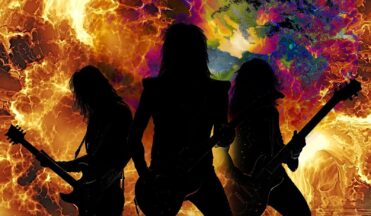Psychedelic rock, a genre that originated in the 1960s, has always been known for its mind-blowing sounds, kaleidoscopic visuals, and experimental nature. As the genre has evolved, it has spawned several subgenres, each with its own unique characteristics and contribution to the overall psychedelic rock landscape. In this comprehensive guide, we’ll take a look at three of the most well-known subgenres of psychedelic rock: acid rock, space rock, and neo-psychedelia.
Essence rock – a pioneering subgenre
Essence rock, a term that emerged in the late 1960s, is often considered a precursor to psychedelic rock. The name itself is a nod to the hallucinogenic drug LSD, which was widely used by musicians and fans alike during the era. Essid rock is characterized by heavy, distorted guitar riffs, extended improvised solos, and a focus on creating a hypnotic, trance-like atmosphere.
One of the defining features of acid rock is its raw, unpolished sound. Bands such as The 13th Floor Elevators, MC5, and Blue Cheer pioneered this style, creating a sonic assault that was both exciting and stunning. The 13th Floor Elevators, led by the enigmatic Rocky Erickson, released their debut album The Psychedelic Sounds of the 13th Floor Elevators in 1966, which is widely considered one of the first psychedelic rock albums. The album’s title track, “You’re Gonna Miss Me,” showcases Erikson’s distinctive vocals and the band’s use of the electric pitcher, an unconventional instrument that added to their unique sound.
Another iconic acid rock album is MC5’s Kick Out the Jams, released in 1969. The album’s title song is an energetic anthem that captures the rebellious spirit of the era. MC5’s sound was a mixture of hard rock, blues, and psychedelia with brilliant solos by guitarist Wayne Kramer and powerful vocals by Rob Tyner.
Space rock – the cosmic sound of psychedelia
While acid rock focused on creating a rough, intuitive sound, space rock took psychedelic rock into a more ethereal direction. Space rock emerged in the late 1960s and early 1970s, when bands like Hawkwind, Pink Floyd, and Gong explored the cosmic and futuristic aspects of psychedelia.
Hawkwind, formed in 1969, is often considered the quintessential space rock band. Their sound was a mixture of heavy riffs, electronic textures, and sci-fi lyrics. Albums like “In Search of Space” (1971) and “Doremi Fasol Latido” (1972) demonstrated the band’s ability to create vast, atmospheric soundscapes that transported listeners to other worlds. Tracks such as “Master of the Universe” and “Silver Machine” became the main elements of the space rock canon.
Pink Floyd, although not exclusively a space rock band, made a significant contribution to the genre with albums such as A Saucer Full of Secrets (1968) and Meddle (1971). The band’s use of extended improvisation, ambient textures, and conceptual themes created a sense of cosmic wonder that was both fascinating and disturbing. The 23-minute epic “Echoes” from the album “Meddle” is a vivid example of Pink Floyd’s ability to create fascinating, unearthly soundscapes.
Neo-psychedelia – a modern twist on a classic genre
When psychedelic rock fell out of favor in the late 1970s, a new generation of musicians began to rediscover and reinterpret the genre. Neo-psychedelia, which emerged in the 1980s and continues to thrive today, is a diverse subgenre that combines elements of psychedelic rock with modern influences.
One of the earliest and most influential neo-psychedelic bands was The Teardrop Explodes, formed in Liverpool in 1978. Led by the charismatic Julian Cope, the band’s sound was a mixture of psychedelia, post-punk, and new wave. Albums such as Kilimanjaro (1980) and Wilder (1981) featured catchy hooks, swirling guitars, and Cope’s distinctive vocals, which ranged from humming to manic.
Another key figure in the neo-psychedelia scene was Robin Hitchcock, who first gained attention as the frontman of The Soft Boys in the late 1970s. Hitchcock’s solo work, which began in the early 1980s, combined surreal lyrics, jangly guitars, and a quirky, unconventional sensibility. Albums such as I Often Dream of Trains (1984) and Fegmania! (1985) showcased Hitchcock’s unique songwriting style and his ability to create psychedelic pop gems.
Comparative analysis of subgenres
While acid rock, space rock, and neo-psychedelia share a common basis in psychedelic rock, each subgenre has its own distinctive characteristics and contributions to the overall genre.
With its raw, unpolished sound and focus on creating an intuitive, trance-like atmosphere, acid rock laid the groundwork for much of the heavy metal and stoner rock that would emerge in the following decades. Bands such as MC5 and Blue Cheer paved the way for the loud, distorted guitars and aggressive energy that have become characteristic of these genres.
Space rock, on the other hand, took psychedelic rock in a more ethereal and conceptual direction, with bands like Hawkwind and Pink Floyd exploring the space and futuristic aspects of the genre. The use of extended improvisation, ambient textures, and science fiction-inspired themes created a sense of wonder and mystery that was both fascinating and disturbing.
Neo-psychedelia, which emerged decades later, combined elements of psychedelic rock with contemporary influences from genres such as indie rock, dream pop, and electronica. Bands such as The Flaming Lips and Tame Impala demonstrated that psychedelic rock could still be relevant and appealing in the modern era, using lush arrangements, introspective lyrics, and catchy hooks.
Despite their differences, all three subgenres share a common thread in exploring altered states of consciousness and using psychedelic imagery and symbolism. Whether it’s the raw, visceral energy of acid rock, the cosmic wonder of space rock, or the introspective, dreamlike quality of neo-psychedelia, each subgenre offers a unique take on the psychedelic rock experience.
Key artists of psychedelic rock subgenres
While many bands and artists have contributed to the development of psychedelic rock subgenres, some stand out as particularly influential and iconic.
In the realm of ambient rock, Rocky Erickson and The 13th Floor Elevators are undoubtedly one of the most important figures. Eriksson’s distinctive vocals and the band’s use of the electric pitcher created a sound that was both disturbing and exciting. Wayne Kramer of the MC5 and Lee Stevens of Blue Cheer also left an indelible mark on the genre with their brilliant guitar playing and raw, uncompromising sound.
In the world of space rock, Lemmy Kilmister of Hawkwind and David Allen of Gong were true visionaries. Kilmister’s thunderous bass lines, Allen’s cosmic lyrics, and oriental sounds helped define the genre’s otherworldly sound. David Gilmour and Roger Waters of Pink Floyd also made a significant contribution to space rock through the use of extended improvisation and ambient textures.
In the neo-psychedelia scene, Julian Cope and Robin Hitchcock were pioneers who helped revive interest in psychedelic rock in the 1980s. Cope’s catchy songs, Hitchcock’s surreal lyrics, and jangly guitars paved the way for later bands like The Flaming Lips and Tame Impala. Wayne Coyne and Kevin Parker, the respective frontmen of these bands, continued the psychedelic rock tradition with their unique styles and approaches.


